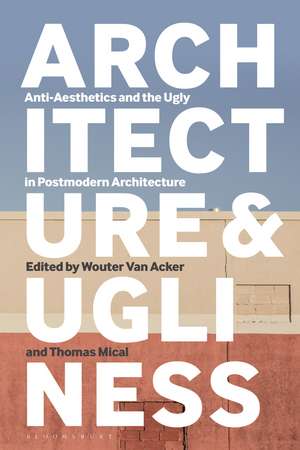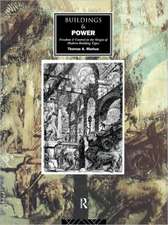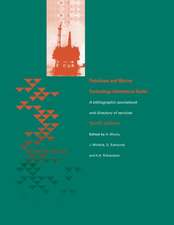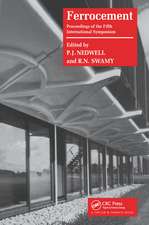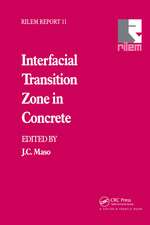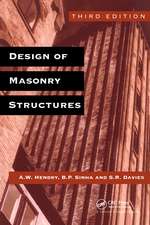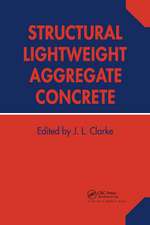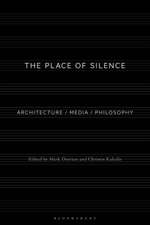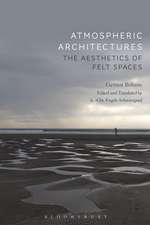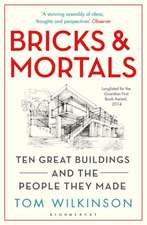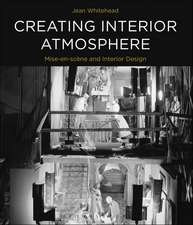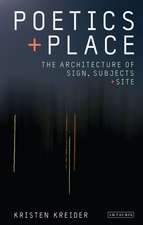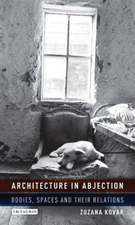Architecture and Ugliness: Anti-Aesthetics and the Ugly in Postmodern Architecture
Editat de Wouter Van Acker, Professor Thomas Micalen Limba Engleză Paperback – 5 mai 2021
| Toate formatele și edițiile | Preț | Express |
|---|---|---|
| Paperback (1) | 184.42 lei 3-5 săpt. | +54.55 lei 7-11 zile |
| Bloomsbury Publishing – 5 mai 2021 | 184.42 lei 3-5 săpt. | +54.55 lei 7-11 zile |
| Hardback (1) | 603.33 lei 6-8 săpt. | +132.39 lei 7-11 zile |
| Bloomsbury Publishing – 8 ian 2020 | 603.33 lei 6-8 săpt. | +132.39 lei 7-11 zile |
Preț: 184.42 lei
Preț vechi: 211.08 lei
-13% Nou
Puncte Express: 277
Preț estimativ în valută:
35.29€ • 38.32$ • 29.65£
35.29€ • 38.32$ • 29.65£
Carte disponibilă
Livrare economică 01-15 aprilie
Livrare express 18-22 martie pentru 64.54 lei
Preluare comenzi: 021 569.72.76
Specificații
ISBN-13: 9781350236707
ISBN-10: 1350236705
Pagini: 304
Ilustrații: 32 bw illus
Dimensiuni: 156 x 234 x 23 mm
Greutate: 0.64 kg
Editura: Bloomsbury Publishing
Colecția Bloomsbury Visual Arts
Locul publicării:London, United Kingdom
ISBN-10: 1350236705
Pagini: 304
Ilustrații: 32 bw illus
Dimensiuni: 156 x 234 x 23 mm
Greutate: 0.64 kg
Editura: Bloomsbury Publishing
Colecția Bloomsbury Visual Arts
Locul publicării:London, United Kingdom
Caracteristici
The 'ugly' as a concept has been oddly overlooked in architectural theory - despite being an area of growth interest in art theory, literary theory and cultural history. This volume brings architecture up to speed
Notă biografică
Wouter Van Acker is chargé de cours (Associate Professor) and Chair of Architectural Theory at the Université Libre de Bruxelles (ULB), Belgium. Thomas Mical is Professor of Architectural Theory and Head of the School of Art and Design of Auckland University of Technology, New Zealand. He is the author of Surrealism and Architecture (2004).
Cuprins
List of Figures List of Contributors Retracing the Ugly and the Anti-aesthetic as a Productive Force in Postmodern ArchitectureWouter Van Acker, (Université libre de Bruxelles, Belgium) 1. Ugliness, the anti-aesthetic and appropriation: with some remarks on the architecture of ARM John Macarthur, (University of Queensland, Australia) 2. On Ugliness (in Architecture)Bart Verschaffel, (Ghent University, Belgium) PART 1: UGLY AND MONSTROUS 3. Instrumentalizing Ugliness: Parallels between High Victorian and Brutalist Architecture Timothy M. Rohan, (University of Massachusetts, Amherst, USA) 4. Monstrous Becomings: A Minor CartographyHeidi Sohn, (TU Delft, the Netherlands) 5. Faux Monumentality in Ricardo Bofill's Les espaces d'AbraxasThomas Mical,(Auckland University of Technology, New Zealand) 6. Post-communism and the Monstrous: Skopje 2014 and Other Political TalesMirjana Lozanovska, (Deakin University, Australia) 7. Here be MonstersAndrew Leach, (The University of Sydney, Australia) 8. To Make MonstersCaroline O'Donnell, (Cornell University, USA) PART 2: UGLY AND ORDINARY 9. 'Ugly': The Architecture of Robert Venturi and Denise Scott BrownDeborah Fausch 10. Camp Ugliness: The Case of Charles W. MoorePatricia A. Morton, (University of California, Riverside, USA) 11. Architecture in El Alto: the Politics of Excess Elisabetta Andreoli 12. The Critical Kitsch of Alchimia and Memphis: Design by MediaAnnMarie Brennan, (University of Melbourne, Australia) 13. The Immediacy of Urban Reality in Postwar Italy: Between Neorealism's and Tendenza's Instrumentalization of UglinessMarianna Charitonidou, (National Technical University of Athens, Greece) 14. Ugliness as Aesthetic Friction: Renewing Architecture Against the GrainLara Schrijver, (University of Antwerp, Belgium) 15. Ugliness, or the Cathectic Moment of Modulation between Terror and the Comic in Postmodern ArchitectureWouter Van Acker, (Université libre de Bruxelles, Belgium) Index
Recenzii
A wonderfully rich and stimulating collection of essays, which plumbs the fraught nooks and crannies of the ugly's discursive terrain. Taken together, the detailed case studies build a satisfyingly variegated account of the complex play of fascination and repulsion that attends aberrant form and architecture's negotiations with it since the mid-twentieth century.
